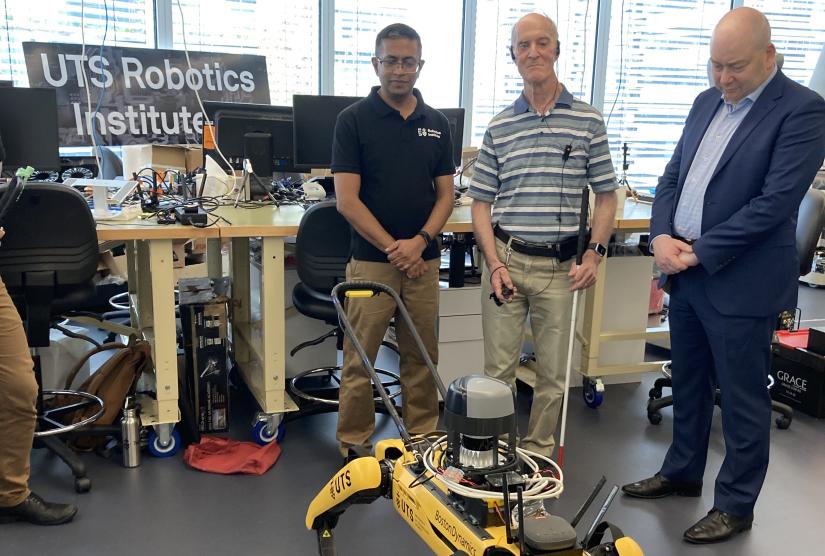Next generation robotic aid for vision impaired people
The research aims to use advanced robotic sensing and machine learning-based decisions to increase independence and confidence for visually impaired people.

(L-R) Sarath Kodagoda, UTS Robotics Institute, Andrew Downie, Accessibility Consultant, Glenn Mason, Guide Dogs NSW/ACT.
Transforming lives through robotics
An exciting partnership has merged between the University of Technology Sydney (UTS) Robotics Institute and Guide Dogs NSW/ACT. Funded by the Australian Research Council and TPG, the partnership will seek to build the next generation of mobility aids for people who are blind or have low vision.
More than 2.2 billion people worldwide are blind or have some degree of near or distance vision impairment. While Guide Dogs are the current industry standard for supporting independent travel, the 3-year project seeks to harness robotics to offer greater choice for the blind and low vision community.
We’re interested in how advanced robotics, sensors and data algorithms can improve the lives of people with low vision and blindness and enable more independent, safe, and fluid mobility for the user.
Jodi Martin
General Manager Strategy and Innovation at Guide Dogs NSW/ACT
“This could be something that’s built into a cane, used alongside a Guide Dog, or as a separate visual aid that works independently of what’s already on offer.”
The project will be guided by the input of Guide Dog’s clients and staff with blindness or low vision.
“The way technology looks, moves, and interacts with the individual matters. If we get all those things right, people will want to use it,” she said.
LEARN MORE about UTS Robotics Institute research projects
